
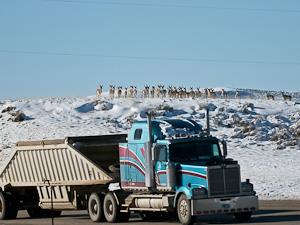
The corridor concept
According to the Encyclopedia of Earth, a biological corridor is the designation of a continuous geographic extent of habitat that links ecosystems spatially or functionally. It restores or preserves the connection between habitats that are fragmented by natural causes or human development by creating a bridge across a divide. Methods for developing a large corridor can be as simple as working with landowners to raise the wire on barbed wire fences by six inches or as complex as land conservation schemes.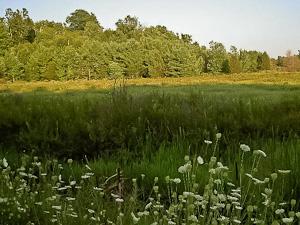
Biological corridors can preserve genetic and biological diversity within an ecosystem. Human development and infrastructure cut large swaths in the land between maintained habitats. These divides restrict the movement of flora and fauna within large geographic regions, and animal movement between fragmented lands can be severely diminished or halted altogether. As areas are cut off, the biodiversity of the fragmented areas dwindles, which can reduce genetic diversity over time because the pool for possible mates for a species is limited. "The smaller the area, the fewer species could exist," according to conservation biologist Michael Soule. Key to understanding the need for large areas is the principle of island biogeography. Habitat fragmentation isolates populations and prevents natural migratory and movement patterns, which creates artificial islands where animals do not have the large ranges necessary to maintain high population levels or species diversity. "Isolation is death to wild areas and to the flora and fauna," said Soule. Only by connecting these artificial islands will animals have sufficient ranges. National parks and protected wilderness areas harbor many important ecosystems, but only by maintaining connectivity will animals and plants have sufficient space to move around and thus maintain biological and genetic diversity.
Before European and American settlement of the continent, things were different. "Habitat was relatively intact," said Emily Conger, president of the Algonquin to Adirondacks Conservation Initiative. "Settlers clear-cut large blocks of forest or put in road networks. They changed what was natural habitat into human dominated landscape." The needs of humans fragmented ecosystems on the North American continent. Animals that require large ranges are especially at risk from habitat fragmentation. "The first thing that happens when an area is isolated is the disappearance of the larger, wide-ranging animals, particularly the carnivores," said Soule. "Once the large carnivores disappear, things start to unravel." Large carnivores, including wolves, bears, and jaguars, are keystone species, those whose effect on their ecosystem is the same as the effect a keystone has on an arch – their ecological role supports the entire ecosystem and keeps it healthy. Large predators keep populations of prey from growing too large, which in turn maintains healthy levels of vegetation, which in turn supports various types of animals, and so on. Often, the very presence of major predators can change prey behavior, creating an ecological check on overgrazing. When a keystone is removed from an arch, the arch collapses, as does an ecosystem in which a keystone species is removed. In Yellowstone National Park, the absence of wolves for most of the twentieth century led to boom-and-bust population cycles for elk. Without many predators, elk populations grow unchecked until the ecosystem can no longer support them, leading to a population crash. These cycles affect the rest of the ecosystem, as well. Keystone species are often the charismatic species – species like polar bears that attract attention to conservation efforts because of their broad popular appeal. Many of the conservation methods that affect charismatic keystone species will protect other species, as well.
Drivers of fragmentation
Human fragmentation of ecosystems takes many forms, often as built infrastructure. Usually developed in long, straight lines, highways and energy infrastructure can effectively divide the land in two. "Generally what happens when you pave a highway is the forest recedes on both sides of the highway," said Adrian Forsyth, president of the Amazon Conservation Association (ACA). Highways divide areas and make it dangerous for animals to cross. "The more you divide the forest up, the less compatible it is with more area-extensive wildlife," said Forsyth. Roads can present serious dangers. "Highways are tremendously destructive to wildlife," said Conger. "The 401 highway runs along the St. Lawrence River, and it slices A2A in half. The number of animals that get killed on the 401 is extremely high." According to Conger, on just one small section of the highway, twelve thousand animals were killed in 2010. Such infrastructure development prevents natural movement and can sever protected areas from one another. 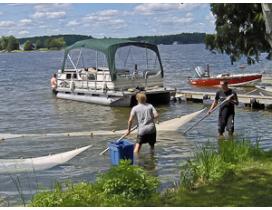
Corridor organizations work to craft broad partnerships among many different types of environmental stakeholders. Yellowstone to Yukon Initiative (Y2Y) works with more than 135 partners, ranging from local conservation organizations to governments, businesses and industries. They focus on creating connectivity in the vast stretch of land between Yellowstone National Park in Wyoming and the northern Yukon region in Canada. "We try to work with everyone who has an impact on how the land is managed in the Y2Y region," says Francis. "Most people are very supportive." The large size and scope of corridors mean that managing organizations need to engage many different types of stakeholders to be effective. Freedom to Roam, a conservation coalition encouraging wildlife corridors, focuses specifically on engaging corporations. "Corporations have corporate institutional responsibility programs, and they have corporate philanthropy," said Jeffery Parrish, executive director of Freedom to Roam. "We work with corporations to use their marketing campaigns to raise awareness and spread this solution about wildlife corridors." A broad appeal and variety of partnerships form the foundation of corridor projects.
Corridor organizations use a variety of conservation methods. When it comes to major fragmentation, like that caused by roads, solutions can be very pronounced. "Y2Y promotes wildlife overpasses and underpasses to mitigate that impact of highways," said Francis. "We also teach communities how to manage their garbage." Teaching residents how to properly manage waste prevents communities from attracting grizzly bears and curtails human-bear interactions. Corridor projects often balance corridor conservation actions that promote connectivity with general conservation actions. Advocating for the creation of protected areas goes hand in hand with connecting those areas. By working to minimize human interaction, corridors can minimize the human impact on plants and wildlife. Each corridor has unique challenges and conditions that determine the approach to its creation and management. 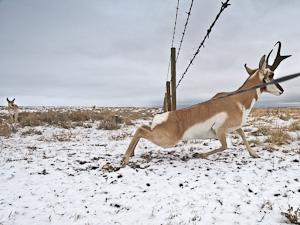
The Yellowstone to Yukon Initiative
The Yellowstone to Yukon Initiative, inspired by the travels of Pluie the wolf, began after an initial meeting in 1993. "Conservationists and scientists came together from Canada and the United States and decided that we needed to think about conservation and management for conservation at a continental scale," said Francis. "A landscape that made sense at that scale was the Rocky Mountains between Yellowstone National Park and the northern Yukon. Y2Y is a large landscape conservation vision within which many protected areas and wildlife habitats will be linked by corridors and other linkages that are useable by wildlife." Spanning over 502,000 square miles, only about 10 percent of the region's land has federal or state protected status. Throughout this range, Y2Y has three conservation targets: bears, birds and fish.
Grizzly bears are a focal point of Y2Y's land conservation efforts. "Grizzly bears are very challenging to live with," said Francis. "They require large tracts of essentially wild land in order to live, and if we can manage the land for successful survival of grizzly bears, many other species will also benefit." Grizzly bears, as keystone predators and umbrella species, are essential to the health of the ecosystem. The grizzlies of the lower forty-eight states are threatened by habitat fragmentation. "Their future depends on remaining connected, physically and genetically, to the large population in Canada," said Francis. A major challenge is the U.S.-Canada border itself. Development along the border has threatened connectivity, and different national jurisdictions also pose challenges to the creation of conservation schemes. In response, Y2Y works to preserve land along the border. Y2Y also works to make Highway 3, a major fragmenting feature, more passable for bears and other animals.
Birds and fish are the other focal points of Y2Y's work. There are 275 species of birds, both resident and migratory, that use the Y2Y region in some manner. Many of these birds rely on the land in this corridor to feed, stage, breed, nest and raise their young. Using twenty focal species representative of various avian needs, Y2Y is aiming to develop partnerships to protect and promote bird habitats. Fish habitats are also key targets because fish provide food sources for many species in the corridor, including grizzly bears. According to Francis, "Fish species and aquatic habitat are different." The habitat requires different methods to deal with species movement up and down streams. Protecting watersheds and fish species benefit the entire corridor. Some of the northernmost watersheds in the Y2Y-managed areas remain free of invasive species, making them prime targets for conservation.
Other conservation initiatives
On the eastern side of the continent, the Algonquin to Adirondacks Conservation Association seeks to maintain connectivity between Ontario, Canada and New York State. "We work in an area in that is likely the most biologically significant in Canada," said Conger. "We have the most biodiversity for plant species and hundreds of vertebrates." The reason for the high diversity is the connectivity between protected areas. "This corridor is the link between the two largest parks in eastern North America," said Conger. "A2A is the one and only north and south passageway between the United States and Canada in the East." The linkages and local geography make the A2A corridor extremely diverse and important.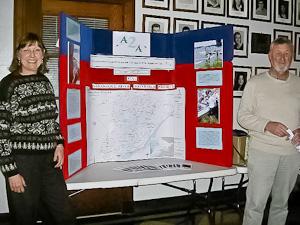
Corridors are not just a North American occurrence. The Amazon Conservation Association's (ACA) Tambopata corridor is in the development phase in the Peruvian Amazon. It was formulated in response to the construction of an inter-oceanic highway, built to make a land connection between communities in the Amazon and the coastal areas on the other side of the Andes. In the Amazon, agricultural development follows roads into the rainforest. "Three years ago, we decided to formulate a project that would try and work with state and private land on both sides of the highway to maintain some biological connection between Manu and Los Amigos Conservation Concession," said ACA's Forsyth. With the highway nearly complete, ACA is working with forest concessions and landowners to maintain a forested economy. By keeping much of the area forested, the ACA hopes to prevent major fragmentation from occurring in the first place. "This area has one of the greatest concentration of terrestrial and freshwater species on the planet, right where the Andes come rising out of the Amazon," said Forsyth. "Many of these areas are biologically intact." By preventing fragmentation in the first place, ACA hopes to preserve the biological diversity and richness of the area.
Currently, ACA is conducting the first phase of its corridor project: biological and social baseline studies, as well as a comprehensive connectivity assessment. ACA hopes to form a science-based corridor design. The corridor's location makes implementation different from Y2Y and A2A. As the area is still intact, the goal is to focus on how to keep it that way. ACA plans to work with forest concession owners to promote sustainable forestry in the area and with local communities to promote ecotourism. "There are a variety of stakeholders there that can be incentivized to maintain forest, as opposed to clear forest," said Forsyth. "As long as you can create the right economic incentives to maintain forest, there will be good biological connectivity in the region." Developing the proper incentives to maintain the natural geography is the goal of the Tambopata project.
Challenges to conservation and the need for corridors
Biological corridors as conservation schemes have some limitations. One of the biggest challenges is managing the land when human borders and natural habitats aren't exactly the same. Corridors are large-scale programs that often cross multiple jurisdictions, and financial and political differences in bordering states and countries can complicate conservation efforts. A2A and Y2Y work in both the United States and Canada and have developed relationships with both governments.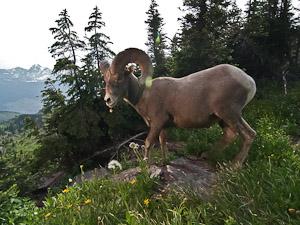
Complicating and driving the need for biological corridors is the threat of widespread species extinction from climate change. As climates change, natural habitats for both flora and fauna will shift. "Who knows what measure it will be, but if wildlife needs to move north because of global warming, the only way they will be able to do it in eastern North America is through A2A," said Conger. Animals will need corridors to move as a rapidly changing world alters their habitats. "Rapid climate change is probably the greatest challenge facing the Y2Y," said Francis. "Things are going to change remarkably and in ways we can't anticipate. Protecting connectivity allows animals to migrate to higher latitudes and higher mountain slopes." The pace of climate change makes migration, not adaptation, the best survival strategy for many species.
Without connectivity and established corridors, many species already threatened by fragmentation face extinction as ecosystem alteration and destruction alter their native habitats. The fragmentation that already prevents animal movement becomes very dangerous when compounded by climate change. Species would find that their traditional habitat is no longer suitable, and without a path to different habitats, species would become trapped in unsuitable environments and quickly die off. This is a major justification for the Tambopata corridor. "If you want to get the maximum number of terrestrial and freshwater species through rapid climate change, this is the area," said Forsyth. "The animals would simply refine their habitat along this elevation gradient up into the Andes." By recognizing the dangers that fragmentation and climate change together hold, corridors can play a key role in preventing species extinction in a changing world.
There are many ways for individuals to support biological corridors and similar conservation schemes. While donating to these organizations does help significantly, there are many other things people can do. Volunteering with local conservation organizations can help maintain the biodiversity that corridors seek to protect. Another way to get involved is through encouraging members of Congress to support conservation initiatives both domestically, like A2A and Y2Y, and internationally, like the proposed Tambopata corridor. "The more that they hear that constituents care about tropical forests and climate change, the more likely Congress is to accept climate change and craft effective policy," said Forsyth. The broad nature of corridors makes any environmental action beneficial. Reducing climate impact will help reduce the danger that climate change poses to species as well. Corridors are most effective when they engage a broad range of partners and accomplish a wide variety of conservation initiatives.
Biological corridors are becoming more and more necessary. "Threats of fragmentation are increasing while climate change and the threat of climate change require connectivity and intact landscapes," said Francis. Human development continues to fragment habitats and threaten species biological and genetic diversity. The large ranges needed to support keystone species like the gray wolf are helped significantly by corridors. Without movement, large carnivores like Pluie will quickly disappear. The loss of these species will have major ecological ramifications. While protected areas like national parks do protect lands, they can only protect ecosystems through connectivity.
Photos are copyright protected and may not be reproduced without permission. Wildlife photos are used with the permission of Joe Riis.